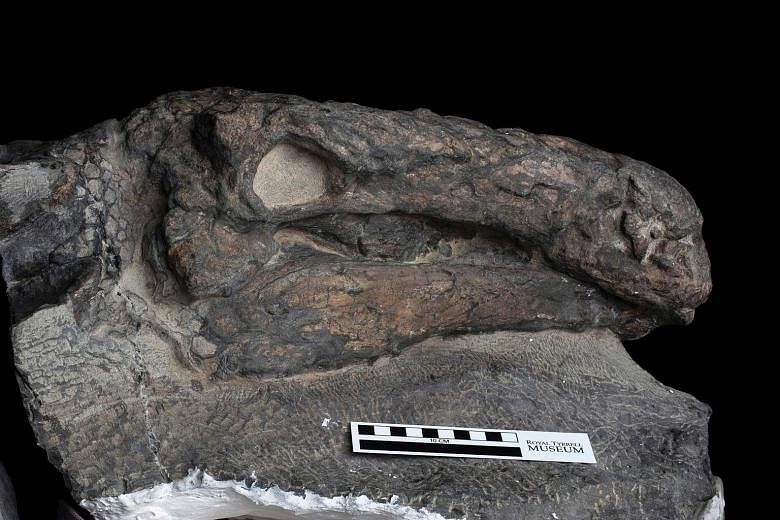MIAMI (AFP) - An extraordinarily well-preserved 110-million-year-old dinosaur found in a mine pit in Canada now has a name and evidence of a troubled past, researchers said.
With fossilised skin and scales, the dragon-like creature is actually a new kind of nodosaur, coined Borealopelta markmitchelli, after the museum technician Mark Mitchell who spent more than 7,000 hours painstakingly removing rock from around the specimen.
The report in the journal Current Biology described it as "the best-preserved armoured dinosaur ever found, and one of the best dinosaur specimens in the world."
The 5.5m-long creature was first discovered in 2011 by a mining machine operator named Shawn Funk, who was working at the Suncor Millennium Mine in Alberta.
The final specimen, which includes the animal from snout to hips, weighs more than 1,300kg.
Unlike most dinosaur specimens, which consist of skeletons or bone fragments, this one is three-dimensional and covered in preserved scaly skin.
"If you just squint your eyes a bit, you could almost believe it was sleeping," said lead author Caleb Brown, a scientist at the Royal Tyrrell Museum where the creature is on display.
"It will go down in science history as one of the most beautiful and best preserved dinosaur specimens - the Mona Lisa of dinosaurs."
By studying its skin, researchers found that this plant-eater, though covered in armour and resembling a walking tank, likely faced a significant threat from meat-eating dinosaurs.
That's because it employed a shielding technique known as counter-shading, which is also used by many modern-day animals.
Researchers used chemical analysis of organic compounds in the dinosaur's scales to reveal the pigmentation pattern of this new genus and species of dinosaur, showing it had reddish-brown pigmented skin with countershading across its the body.
This may have helped it blend in with the environment when approached by a taller predator, researchers say.
But most contemporary animals that have countershading - think deer, zebras, or armadillos - are much smaller and more vulnerable as prey, signaling that this nodosaur faced a real struggle to survive.
"Strong predation on a massive, heavily-armoured dinosaur illustrates just how dangerous the dinosaur predators of the Cretaceous must have been," said Brown.
Scientists are continuing to study the animal for clues about its life, including its preserved gut contents to find out what it ate for its last meal.

